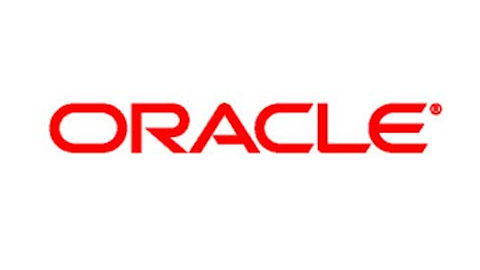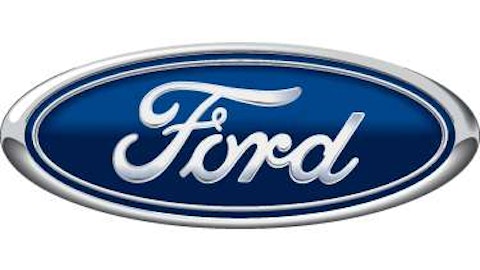In 1983, legendary magician and illusionist, David Copperfield, made the Statue of Liberty disappear instantly in what is still today one of the greatest and most memorable tricks of all time. In the stock market, there have been companies that have made others disappear nearly as fast by either a revolutionizing product or a superior business idea. Other companies simply go away because their business model no longer fits in today’s world. In this article, I discuss a couple of trends I feel are leading to a similar vanishing act among some popular companies.
Game Over for GameStop Corp. (NYSE:GME)
There was a time when GameStop Corp. (NYSE:GME) made sense. That time was far before its IPO in 2002 where it saw its stock soar eclipsing $63/share at the end of 2007. The Babbage’s, FuncoLand’s, and Electronic Boutique’s of the 1980s and 1990s evolved to form what is today the world’s largest multichannel video game retailer that sells new and used video game hardware, physical and digital video game software, and accessories for both consoles and PCs. However, since 2007 the stock has fallen over 60% and I believe it will likely fall much lower in the future until it is game over for GameStop.
For the 3rd quarter of 2012, net sales decreased by 8.9% or $174 million, and this was primarily attributable to a decrease in comparable store sales of 8.3%. New video game hardware sales played a huge part as it decreased 33.4% or $92.8 million. Mad Money’s Jim Cramer stated in mid-January that used games declined about 15% during the holiday season, and because used games represent about 30% of all revenues, this led to Jim Cramer’s downgraded opinion of the stock. I disagree with this logic. Who even buys used games for Christmas presents? More importantly, if you look at GameStop’s latest earnings report breakdown by segment, it is new video game software, not used, that carries the largest load towards net sales for the company at over 43%.
So why is GameStop on its way to disappearing? First, streaming video games and downloadable games are crushing their business model. Less games in their physical medium form (cartridges, CDs, etc.) means no trading and no buying actual games in their traditional form. If you factor that combined, new and used video game software products make up 70% of their sales, then you can see how this hurts GameStop tremendously. If you add the growing interest in mobile games like those in the App Store for iPhone where 7 of the top 10 grossing apps are now games, then you can see where gaming customers are now spending their time and money. When you add the growing popularity of video game subscription services like GameFly, the growing trend of downloadable expansion packs for current games by game developers, and increasing popularity of emulators for older games, these are just more nails in the coffin for GameStop. Lastly, the 10% of sales that is accounted for by new video game hardware will be erased because GameStop will never be able to price match against the bigger players both online like Amazon.com, Inc. (NASDAQ:AMZN), and in larger discount stores like Target Corporation (NYSE:TGT) or Wal-Mart Stores, Inc. (NYSE:WMT). Their next earnings announcement is set for March 18, 2013.

GME Total Return Price data by YCharts
Gorillas Eat Invisible Shields for Breakfast
What would happen if a computer genius figures out how to create an operating system immune to all viruses of all kinds? Anti-virus companies like Symantec, who has seen its stock soar annually, would no longer be needed and would quickly vanish. Unfortunately no one has created an invincible operating system and Symantec will keep making a ton of money. However, Corning Incorporated (NYSE:GLW) may have created the invincible screen to put screen and product protector companies like Zagg Inc (NASDAQ:ZAGG) out of business.
Corning introduced its high-strength alkali-aluminosilicate thin sheet glass, Gorilla Glass, in 2007 for the first iPhones. Since that time, the global manufacturer of glass and ceramics has updated the Gorilla Glass to be nearly indestructible. The latest version called Gorilla Glass 3 may be the beginning of the end for Zagg and their screen protector business model. Gorilla Glass 3 has durability enhancements known as “native damage resistance” all the way down to the atomic level. With a glass that is basically 40% more scratch resistant, the potential 1 billion user’s mobile screens that currently feature earlier versions of the very durable Gorilla Glass, could be upgraded to Gorilla Glass 3 in the coming years.
Corning’s recent earnings show that net sales declined, driven by lower sales in the Display Technologies, Telecommunications, and Environmental Technologies segments, were offset by higher sales in the Specialty Materials segment. Gorilla Glass is part of the Specialty Materials segment and demand has been increasing at a steady pace with a net income change of 55% for the 3rd quarter of 2012 versus the same period in 2011.
Where Corning has seen a modest increase in share price the last 6 months of over 7%, Zagg has fallen over 36% in the same time frame. Although Zagg’s lineup of 5,900 precision, pre-cut invisibleSHIELD designs among many other skins and protectors have helped Zagg increase net sales 59% for the first 9 months of 2012 versus 2011, I see growth opportunities limited and it looks like investors do too. Currently, the invisibleSHIELD product line accounts for approximately 48% of Zagg’s revenues. This could take a big hit as Gorilla Glass 3 arrives. Gross profit margins are already declining for Zagg as they seek future growth in sales of their non-invisibleSHIELD product lines. Quarterly profit margins for the past 5 years have averaged 9.56%. However, Zagg has only beaten this average once the past 6 quarters.
Lastly, the other intangibles don’t help the Zagg story. They face competition by the growing presence of copycats and cheaper alternatives on auction sites like eBay. Rapidly changing technology used to be a positive for Zagg since more devices means more screen protectors. However, changing technology may start to be a negative as customers find less need to protect their soon-to-be obsolete-in-one-month devices and would rather save the extra money towards the latest and greatest. What is the point in putting a screen protector on a smart phone when you will replace that same phone in less than 2 years?

GLW Total Return Price data by YCharts
The Prestige
The third step in magic, The Prestige, is often the hardest part of creating a great magic trick. Would David Copperfield’s vanishing of the Statue of Liberty be as great if he didn’t make it reappear? No. So the question is how can management of both GameStop and Zagg make the third act a success and bring back the greatness that both stocks had in the past? GameStop may have to team up with a big online subscription presence in order to stay relevant with today’s gaming trends. They might have to completely change the business model entirely. Zagg’s proprietary invisibleSHIELD film was originally used to protect military helicopter blades from high-speed damage. As I look at the front of my car and see all the nicks and pits of damage from road debris, rocks, and gravel, I start to wonder. Maybe Zagg’s product doesn’t have to apply primarily to electronic devices?
The article How to Make a Company Disappear 101 originally appeared on Fool.com and is written by Michael Carter.
Copyright © 1995 – 2013 The Motley Fool, LLC. All rights reserved. The Motley Fool has a disclosure policy.




